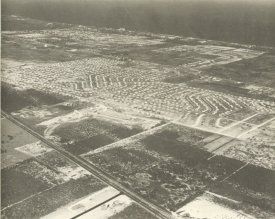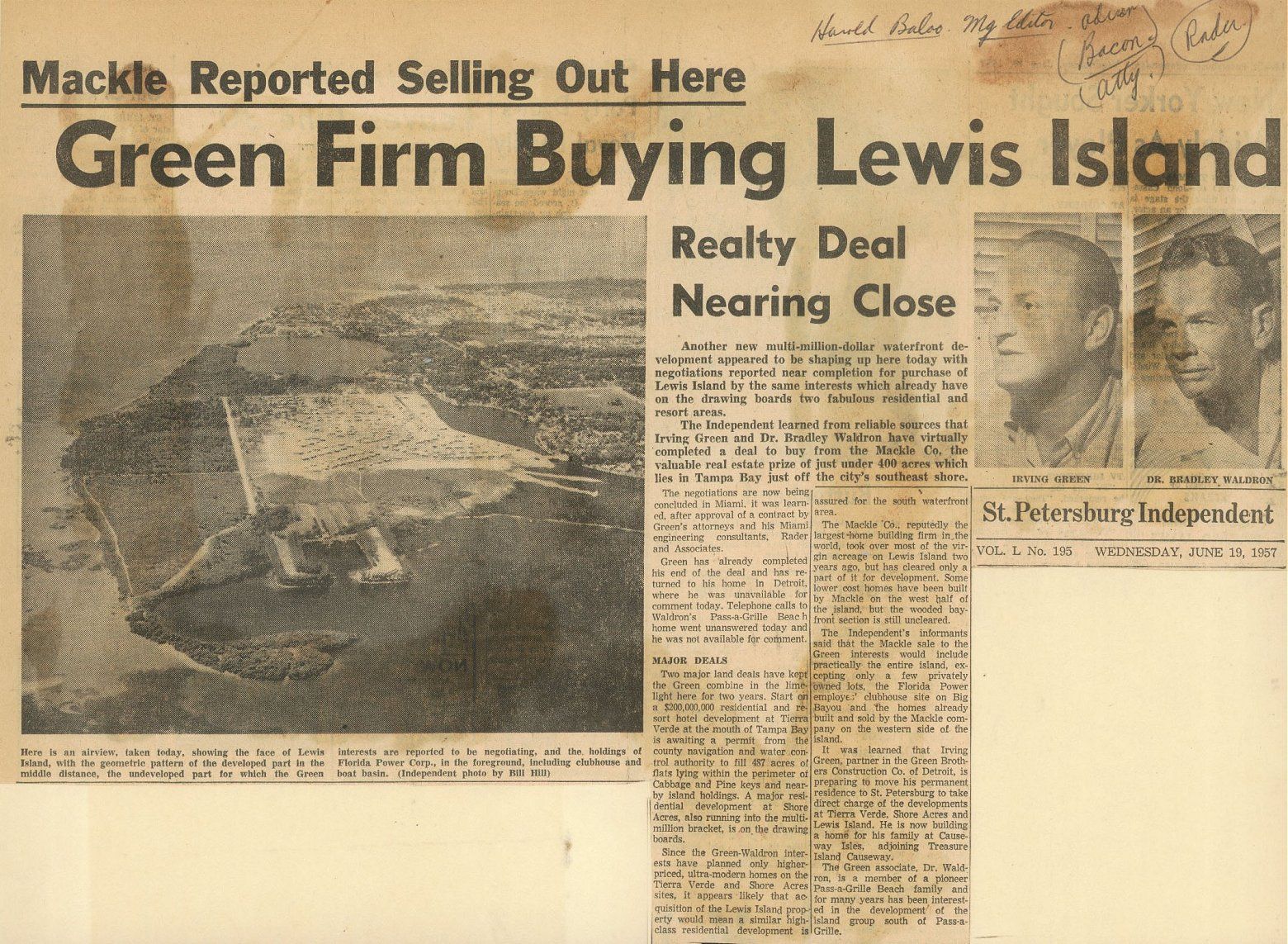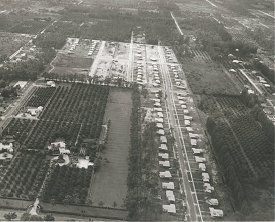GENERAL DEVELOPMENT CORPORATION
THE MERGER
As part of the negotiation whereby Lou Chesler funded the national advertising program it was contemplated that Florida Canada's partnership with the Mackles would take a new form.
On April 21, 1958 Florida Canada acquired the Mackle's 50% interest in the partnership in exchange for stock. After the merger the Mackle Company, in exchange for their 50% interest would receive 200,000 shares of the public company. With the stock they already owned in Florida Canada and stock options that they were to receive as part of their compensation the Mackles, collectively would now own approximately 13 percent of the public company. Simultaneously the Mackle brothers took over management of the company and the name was changed to General Development Corporation. As part of their compensation agreement a contract was entered into whereby the Mackle Company, Inc. would do all of General's construction and development work on a cost-plus basis.
For the first time the Mackles were directly in managing control of a public company.
After the merger, the new General Development Corporation's Board of Directors Consisted of:
Louis A. Chelser - Chairman
Fred W. Hooper
Frank E. Mackle Jr.
Robert F. Mackle
Max Orovitz
Chesler, Hooper and Orovitz had been directors of Florida Canada before the merger
At the merger in April 1958, Frank Jr. became President and Elliott and Robert were named senior officers.
TRANSITION FROM PRIVATE TO PUBLIC
For some time between the Florida Canada joint ventures in 1954 and late 1959 the Mackles were privately developing Westwood Lakes which was not sold out until 1959.
For the next two and a half decades however all construction and development activities were done in the name of the two public companies: General Development Corporation and The Deltona Corporation.
The Mackles, while never owning a majority, did - for the most part - own enough shares to give them effective day-to-day control.
The only significant business ventures conducted - not in the public companies - during that period were The Key Biscayne Hotel until the late 1970s, Westwood Lakes Utility Company until the mid 1960s and - for a brief period between General and Deltona - the Voluscia County land acquisitions. Otherwise The Mackle Company was essentially an investor holding stock in the two public companies.
Note: at General Development Corporation - as will be seen - The Mackle Company, in addition to holding stock, was also a contractor for construction and development activities for which it was paid a fee.
Prior to the merger Florida Canada Corporation published its last (1957) Annual Report.
In it you can see the significant turn in the Mackles direction as the old housing-only projects had been phased out and the new business was being emphasized.
The Annual Report describe the status of their original 1954 ventures:
The Pompano properties had totaled 1,530 acres on each side of U.S. Highway #1.
As of December 31, 1957 1,429 homes had been built and sold and and additional 65 homes were under contract.
In spite of the successful housing program 614 acres of the land had been sold to independent developers during 1956 and 1957 and operations were winding down.
Lewis Island had not been the most successful project. Neither the original models - similar to those sold successfully at Pompano and Westwood - nor the luxury homes introduced later were well received.
In two and a half years since its opening - only 228 homes had been sold.
In August 1957 the remaining property had been sold in bulk to a local developer, Irving Green.
In St. Lucie County, Indian River Hills 76 homes had been constructed and sold by 1956.
Belmont Park, on the west side of Vero Beach in Indian River County had been completed in 1956.
At Port Charlotte, as of the end of 1957, 153 homes had been constructed and sold. Sales contracts for an additional 157 homes had been executed and 98 parcels of business property had been sold.
But 13,782 home sites had been sold there!
By the time of the merger several new properties had been added which were more appropriate for their new installment land sales business.
In Indian River county just south of Vero Beach on U.S. Highway#1 1,586 acres of land had been purchased in November 1957 for two contiguous projects, Vero Beach Highlands and Vero Shores. These properties were being planned for a total of 4,373 home sites and at year end 1957 11 deposits had been taken for eleven home sites.
Indian River Estates, in St. Lucie County had been acquired in 1956. It encompassed 2,373 acres between U.S. Highway#1 and the Indian River. At the end of 1957 1,629 acres had been platted and 2,741 lots had been sold. I do not believe any homes were ever built there.
In June 1957 1,345 acres that would become Sebastian Highlands had been purchased. Located on both sides of U.S. #1 in northern Indian River County, the acreage was being planned in to a community of 4,000 homes. As of the end of 1957 165 home sites had been sold.
And finally, in December of 1957, 2,707 acres of land had been purchased about 20 miles northwest of Cape Canaveral, near Titusville. Several years later these properties would form the nucleus of the city of Port St. John.
Within a year after the merger a new corporate headquarters was constructed adjacent to the Mackle Company's original office building. Ownership of the original building was retained by the Mackle Brothers but the space was leased to General Development.
PORT CHARLOTTE AND THE NEW CITIES
Between the merger which created General Development Corporation in April 1958 and the Mackles departure in February 1962 Port Charlotte grew rapidly and new lands were acquired.
In addition to the projects already launched at the time of the merger two new mega cities were started - Port St. Lucie and Port Malabar. Near the end of the Mackles tenure at General Development the new city of Port St. Johns was opened.
Port Charlotte
Port Charlotte began as a housing only project along the lines of Pompano Beach Highlands and Westwood Lakes. The early success of the mail order sale of home sites soon had the Mackles planning the entire 80,000 acres - and looking for more.
In 1959, the Mackle Brothers added to the Port Charlotte holdings - expanding the community from 80,000 acres to 92,700 acres . These holdings in Charlotte county and adjoining Sarasota county were so large that the northern parcel in Sarasota County - although contiguous to Port Charlotte - was introduced as a second community, North Port Charlotte. Today North Port Charlotte exists as the separately incorporated city of North Port.
The property and the community is described in General's 1960 Annual Report published in the spring of 1961.
"Right in the heart of one of Florida's fastest growing areas lies a General Development community which is setting a progress pace for the whole Sunshine State.
It is Port Charlotte, biggest and most advanced of all the Company's planned communities. Stretching along the shores of beautiful Charlotte Harbor and the warm Gulf of Mexico between Sarasota and Fort Myers, Port Charlotte achieved the status of a young city in 1960...
Port Charlotte covers 92,700 acres, fronting for 40 miles on the Gulf, the harbor and the picturesque Peace and Myakka Rivers and divided for 13 miles by busy U.S. Highway 41."
Port St. Lucie
Late in 1958, in St. Lucie County, another new city-sized community was launched. And this one would include a totally new concept. The community would be called Port St. Lucie.
Right from the start in 1954 the Mackles had their eyes on St. Lucie County. By 1958 they had already sold out the Indian Hills and Indian River Estates projects there.
The first of the properties to be called Port St. Lucie was acquired in late 1958. The acquisition was for 5,500 acres from a group headed by Gardner Cowles, publisher of LOOK magazine. At the time of acquisition the property was already in the early stages of development and was called River Park. The name was changed to Port St. Lucie and by early 1959 Mackle-Built homes were under construction.
Other acquisitions eventually brought the community to a total of 36,500 acres.
The community is described in the 1960 Annual Report.
"Port St. Lucie ... encompasses 36,500 acres between Fort Pierce and Stewart on Florida's east coast. It reaches from the Indian river on the east to four miles beyond the Sunshine State parkway on the west. Besides its 14 miles of Turnpike frontage the tract has about seven miles frontage on U.S. Highway 1, busiest traffic artery of Florida's east coast.
The area has more than 15 miles of natural waterfront along the meandering St. Lucie River.
General Development started its Port St. Lucie development in late 1958 when some 6,000 acres were purchased. Subsequently, more than 30,000 adjacent acres were added and the entire area was laid out...
The community, planned as a city of one-third of a million persons is located in a part of Florida for which major growth has been predicted during the coming decade.
The beautiful Port St. Lucie vicinity, with its winding rivers and varied tropical trees and shrubs, was a likely spot for General Development Corporation to launch Port St. Lucie Country Club, its new resort-investment program."
Port St. Lucie was conceived as the second of General Developments three mega-cities. And the plan called for - as at Port Charlotte before - a combination of home and installment land sales.
But in early 1960, at Port St. Lucie, the Mackles introduced a totally new concept in Florida home ownership.
Earlier, with the invention of the Mackles installment land sales business it was thought that you could not build a home today for delivery years from now on the purchasers retirement. Now they had found a way to do just that.
Around the Port St. Lucie Country Club the company would market 1285 homes which a purchaser could use for his vacation and ultimately retire in but which - when he was not using it could be put in to a rental pool from which he could derive income to offset the cost of ownership. the company would derive income from the sale of homes and from the operation of the rental pool.
The concept - as it was being marketed primarily as an investment - had to be registered as a security with the S.E.C. I am not sure if it was required at the time but later the concept required the sales representative be licensed as securities dealer as well. It is my impression that these registration and licensing requirement were the reasons that the company did not pursue other developments of this type.
The concept was later embraced by many companies in projects such as Innisbruck and Greenbrier. To emphasize the novelty of the concept at the time, the Prospectus, in the Introduction, states "the ideas ... is new and untried"
Port Malabar
In late 1959 residential development began at Port Malabar, the third mega-city conceived by the Mackles at General. Port Malabar was a continuation of the retirement community-land sales concepts that were so successful at Port Charlotte and Port St. Lucie. But there was one new addition.
The property is described in the 1960 Annual Report
"Port Malabar encompasses 45,197 high rolling acres opening into the Indian river through Palm Bay, four miles south of Melbourne in the Cape Canaveral vicinity of Florida's east coast. The property spreads westward beyond U.S. Highway 1 for 13 miles. In the east it borders Indian river and in the west St. Johns River...
Although property has been set aside for future industrial use at other General Development communities, Port Malabar is the first to incorporate operating industries into its growth.
Port Malabar Industrial Park is a 271 acre area planned to contain full power and utility facilities and nearly five miles of paved streets for its industrial lots and acreage. Strict regulations govern building design and use."
Today Port Malabar has been incorporated into the town of Palm Bay.
Port St. John
By the spring of 1961 the Company's holdings in the Titusville areas of Brevard County had grown to 5,400 acres with a major addition in 1960. The growing space-race was a major factor in the acquisitions of the Port St. John property as it was for the Port Malabar property.
The 1960 Annual Report describes the newest Mackle-Built community.
"In the heart of the Cape Canaveral missile area, midway between the thriving cities of Cocoa (9 miles to the south) and Titusville, the county seat (10 miles to the north), lies General Development's newest planned community - 5,400 acre Port St. John. The nearby Air Force Missile Test Center alone employees 47,500 persons. In the fiscal year of 1958 it spent $87 million for the purchase of supplies, services and maintenance of facilities and $408 million in salaries.....
The tract - divided by U.S. Highway 1 - borders the Indian River in the east and the St. Johns River in the west.
Layout of a complete community - home sites, home areas, school and shopping center sites, parks, recreational area - was completed early in 1960."
THE MARKETING PROGRAM EVOLVES
The success of the marketing effort was driving the phenomenal community growth.
It had all started with the early national advertising experiment and the later refinements of "mail order" selling. In 1956 virtually all land sales contracts came from the mail order program. By 1960, however, mail order sales had dwindled to less than two percent.
Replacing mail order sales was a new - more productive - franchised agent and the branch office network.
In the early days the coupon responses were handled by Miami personnel. Later it was found more efficient to send the coupons to a local representative in the city of origin to handle the response. Thus the out-of-state sales organization - initially a franchise network - was created. Later company owned or "Branch" offices were found to be even more efficient.
According to General's 1958 annual report "agent" or franchised sales offices began in late 1957 and reached full stride in mid 1958. In 1958 twenty six agent sales offices in more than 100 northern cities accounted for more than half of the1958 sales.
The first Branch offices (company owned, off site sales offices) were opened in December 1958. The early results were phenomenal with more than $500,000 in sales reported in the new Miami and West Palm Beach branches in the first three weeks of operation!
By 1960 branch offices were accounting for almost 64 percent of lot sales!
And other refinements to the growing marketing effort were being introduced.
In 1960 - according to that year's annual report - the "outstanding sales promotion innovation of the year (1959) " were bus, airplane and train caravans " which have brought more than 1,000 potential customers to the Company's communities.
The national advertising program was bigger and more sophisticated than ever - with coupons now quickly forwarded to the appropriate area sales office.
Promotion and Publicity were growing more effective. Model homes in Grand Central Station and Philadelphia Station were just two of the creative ideas being implemented.
By 1960 the company began reaching outside of the U.S. as well establishing franchised offices offshore.
The marketing machine was evolving and growing and producing more and more efficiently.

Port Charlotte
1957 Florida Canada
Annual Report
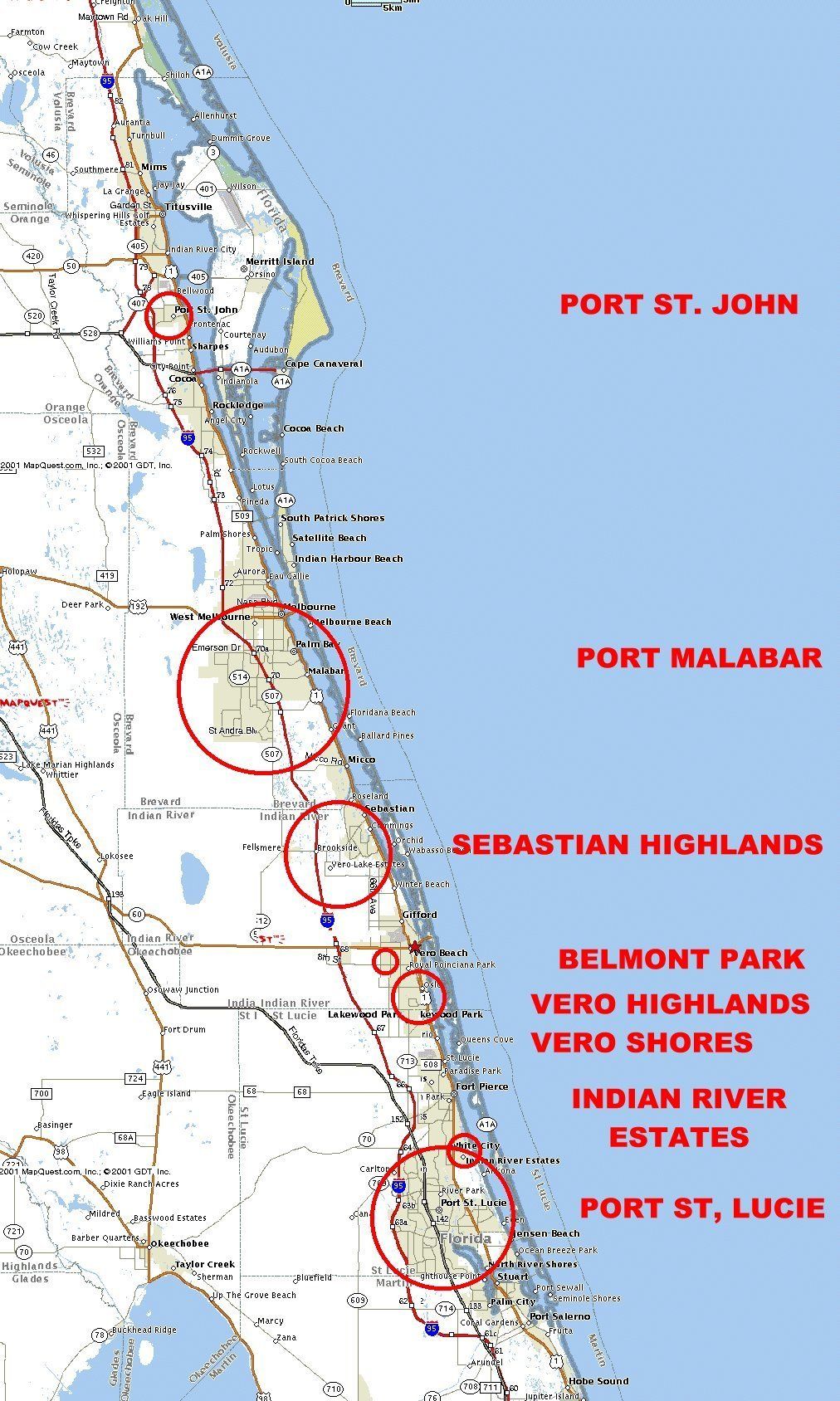
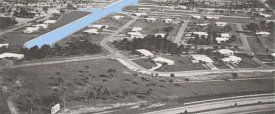
Vero Shores
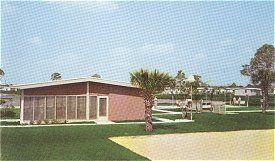
Vero Highlands
Recreation Center
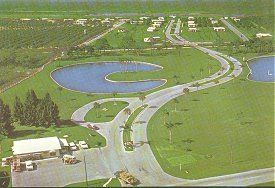
Sebastian Highlands Entrance
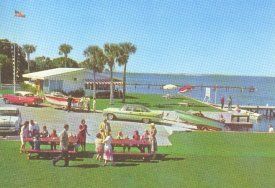
Sebastian Highlands Yacht Club
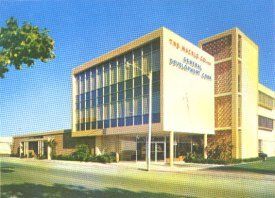
New Corporate Headquarters
incorporating the Mackles original 1940 Coral Way building
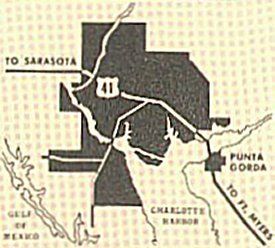
Port Charlotte Property
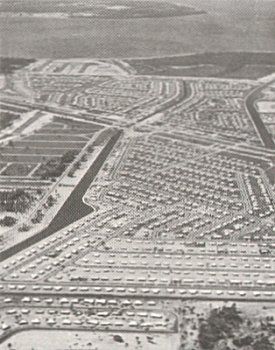
Port Charlotte
1960
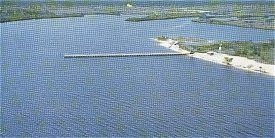
Charlotte Harbor Pier
and Beach Club
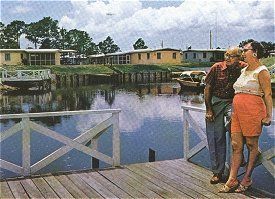
Port Charlotte
Waterfront Homes
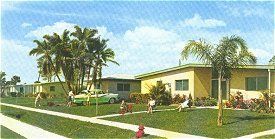
Port Charlotte
Typical Street Scene
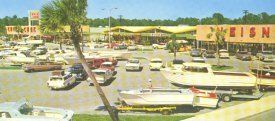
Port Charlotte
Shopping Center
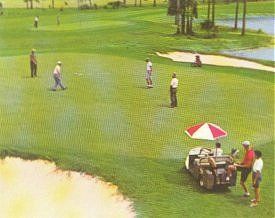
Port Charlotte
Country Club
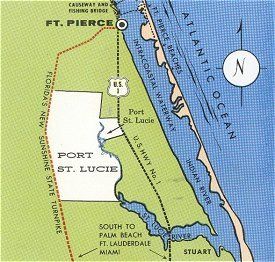
Port St. Lucie

Port St. Lucie Country Club
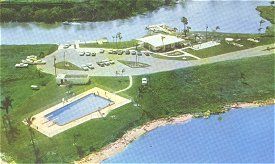
Port St. Lucie Yacht Club
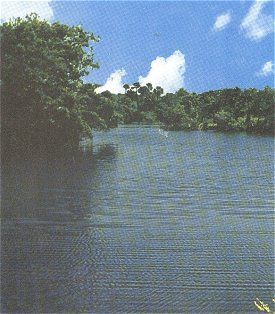
St. Lucie River
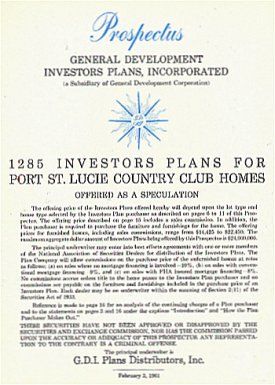
Port St. Lucie Prospectus
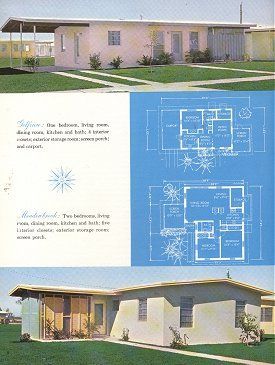
Port St. Lucie
Country Club Homes

Port St. Lucie Golf Course
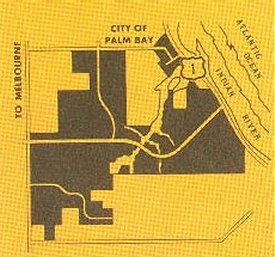
Port Malabar Property
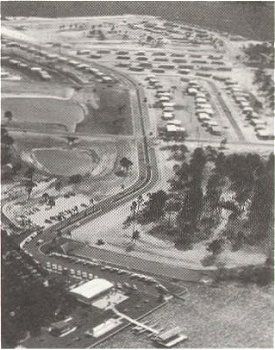
Port Malabar
1960
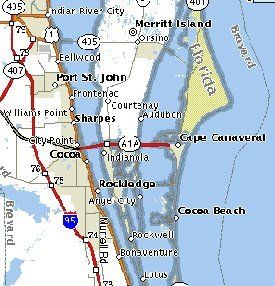
Port St. John
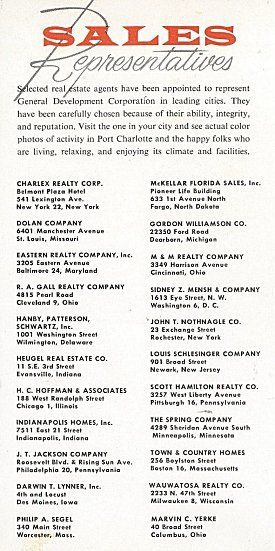
Sales Offices
Late 1957 +/-
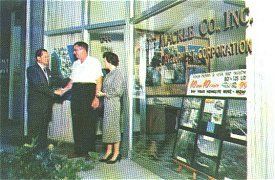
Branch Office
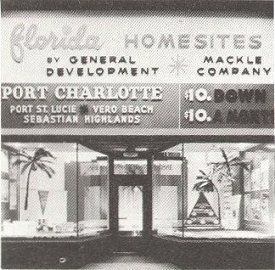
Typical Northern Office
1960
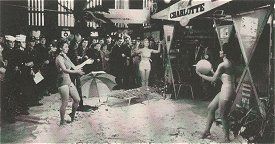
Philadelphia Station Promotion
